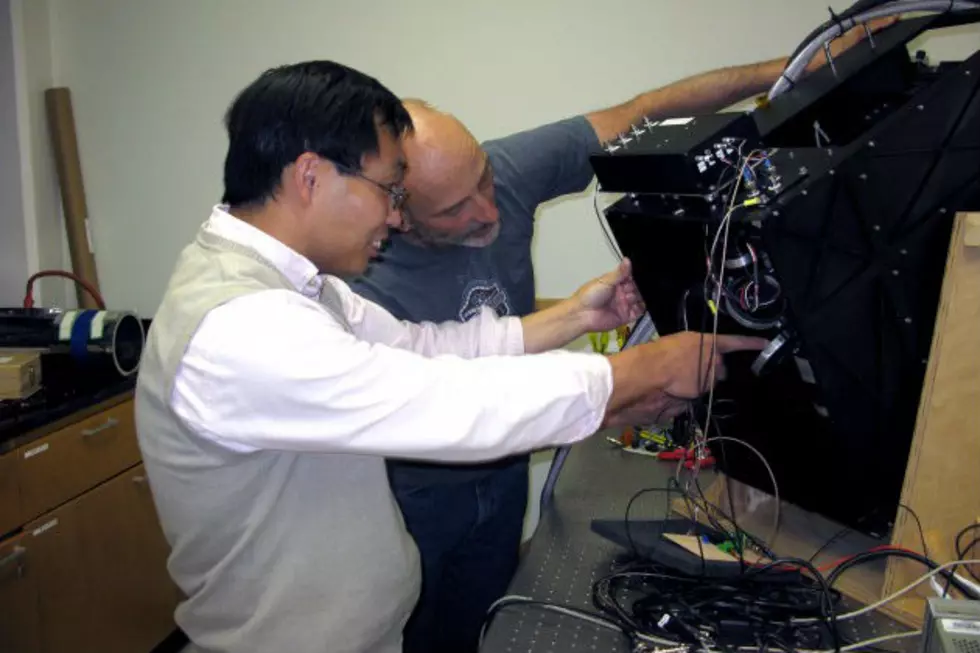
Wyoming Professor Secures $1.2 Million Grant to Develop More Advanced Lidar
In less than two years, the University of Wyoming’s King Air research aircraft will expand its weather forecasting and research capabilities with the use of an advanced form of lidar that will be able to study the behavior of storms at night.
Zhien Wang, a professor in the UW Department of Atmospheric Science, and Perry Wechsler, a UW senior research scientist and chief engineer of the King Air, recently received a $1.2 million National Science Foundation (NSF) grant to develop a Multi-function Airborne Raman Lidar (MARLi). The Raman Lidar will simultaneously measure profiles of temperature, water vapor mixing ratio, clouds and aerosol. Lidar, an acronym for light detection and ranging, is an optic remote sensing technology that can detect and measure molecular aerosols and cloud droplets in the atmosphere.
Wang’s proposal, titled “MRI: Development of a multi-Function Airborne Raman Lidar (MARLi) for Atmospheric Process Studies” was approved for funding by the NSF in July. UW matched the NSF grant, providing $515,000. The funding project started Sept. 1.
Wang says the immediate applications of MARLi include "participating in several field projects being planned to study convective initiation, cloud-environment interactions, mesoscale dynamics, and atmospheric boundary layer over land and oceans. Such studies are fundamental to improving the climate simulations and our capability to forecast weather and air quality."
More From KGAB









